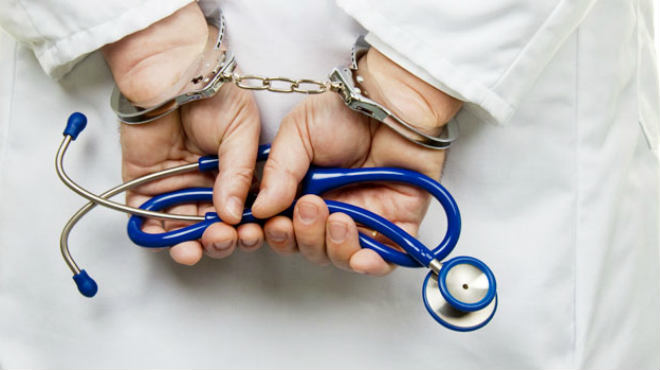Introduction
Accountability isn’t an attack on medicine; it’s protection for humanity.
In India, the relationship between a doctor and patient is sacrosanct and built on trust. But when that trust is broken due to medical negligence, it can lead to irreversible harm—sometimes even death. Medical negligence is not merely a medical error; it’s a legal wrong with serious consequences. This blog explores how Indian law defines and deals with medical negligence, the responsibilities of doctors and hospitals, and what legal remedies are available to victims and their families.
What is Medical Negligence?
Medical negligence occurs when a healthcare professional fails to provide an expected standard of care, resulting in injury or death to the patient. This could involve a misdiagnosis, surgical error, wrong medication, delay in treatment, or even failure to obtain informed consent.
Under Indian law, negligence is broadly defined as a breach of duty of care which results in damage. In the medical context, a doctor is expected to exercise a reasonable degree of skill and care. Failure to do so can lead to civil, criminal, and disciplinary liability.
Key Elements to Prove Medical Negligence
For a successful claim of medical negligence, the victim (or their family) must establish:
- Duty of Care: A legal obligation existed between the patient and the doctor/hospital.
- Breach of Duty: The duty was breached through an act or omission.
- Causation: The breach directly caused harm to the patient.
- Damages: Actual injury or death resulted from the breach.
Doctor’s Responsibility
Doctors are required to follow a standard protocol of diagnosis and treatment. They must:
- Keep the patient informed.
- Maintain proper records.
- Avoid errors in diagnosis and treatment.
- Seek a second opinion when needed.
- Provide emergency care irrespective of payment status.
A doctor cannot be held liable for every unfortunate outcome. But if a doctor acts in a manner no competent professional would have, liability arises.
In Dr. Suresh Gupta v. Govt. of NCT Delhi (2004), the Supreme Court held that only gross negligence, not mere error in judgment, will attract criminal liability.
Hospital’s Responsibility
Hospitals, whether public or private, owe a duty of care to patients from the moment they enter the premises. Their liability arises in two ways:
- Vicarious Liability: For the acts of doctors, nurses, and staff employed by the hospital.
- Direct Liability: For systemic issues like lack of infrastructure, unhygienic conditions, non-availability of life-saving equipment, etc.
Hospitals are expected to:
- Ensure staff is qualified and trained.
- Maintain clean and safe infrastructure.
- Keep accurate records.
- Provide emergency treatment.
Failure in any of these can lead to direct action against the hospital.
Legal Remedies Available
Victims or their families can seek redress through civil, criminal, or consumer courts, or professional regulatory bodies. Here’s a breakdown:
1. Civil Remedy – Compensation
Under tort law, a victim can claim damages for medical negligence by filing a suit in a civil court. Compensation includes:
- Medical expenses
- Pain and suffering
- Loss of income
- Loss of consortium (in case of death)
- Future care expenses (in case of disability)
In Kunal Saha v. AMRI Hospital & Ors (2013), the Supreme Court awarded ₹11 crore to the victim’s family, one of the highest compensation amounts in Indian medical negligence cases.
V. Krishnakumar v. State of Tamil Nadu (2015): The Supreme Court awarded ₹1.38 crore for medical negligence that caused a child’s permanent disability.
2. Consumer Complaint
Patients are treated as consumers under the Consumer Protection Act, 2019. Complaints can be filed in:
- District Commission (up to ₹1 crore)
- State Commission (₹1–10 crore)
- National Commission (above ₹10 crore)
It’s a relatively faster and cost-effective remedy.
With the advent of the CPA almost all cases of medical malpractice have been initiated under its provisions. The landmark judgment of the Supreme Court in the case Indian Medical Association vs. V. P. Shantha (1995) 6 SCC 651 brought the medical profession within the ambit of the CPA.
3. Criminal Prosecution
If gross negligence or recklessness is established, criminal charges can be framed under:
- Section 304A IPC – Causing death by negligence (punishable with up to 2 years imprisonment).
- Section 337 IPC – Causing hurt by endangering life.
- Section 338 IPC – Causing grievous hurt by endangering life.
However, the courts have clarified that criminal prosecution should not be used lightly against medical professionals. A preliminary expert opinion is often required.
4. Medical Council Proceedings
A complaint can also be made to the Medical Council of India (now replaced by National Medical Commission) or State Medical Councils. If found guilty, doctors may face:
- Warning
- Suspension
Jacob Mathew case “A professional may be held liable for negligence only if it is proved that he is guilty of failure that no professional in his field would have committed.”
Bolam Test
When there is more than one acceptable course of treatment, and the doctor chooses one of them in good faith, it is not negligence even if it turns out to be less effective.
Bolam Test (adopted in Indian law): A doctor is not negligent if their actions are in accordance with a practice accepted by a responsible body of medical professionals.
Conclusion
The legal framework in India aims to strike a delicate balance: protecting patients from harm while also shielding doctors from unfair criminalization. Medical professionals are expected to act with reasonable care and skill, not perfection. When negligence is proven, the law provides robust remedies but also recognizes that not every medical failure is a legal fault.
Patients have every right to demand accountability, but courts equally recognize the complexities of medicine. As such, doctors are liable only for clear breaches of duty, not for adverse results beyond their control.
In the end, justice in medical negligence lies not just in punishment but in restoring faith in law, in ethics, and in the healing touch of medicine.
Contributed by Aditi Kaushik, intern

